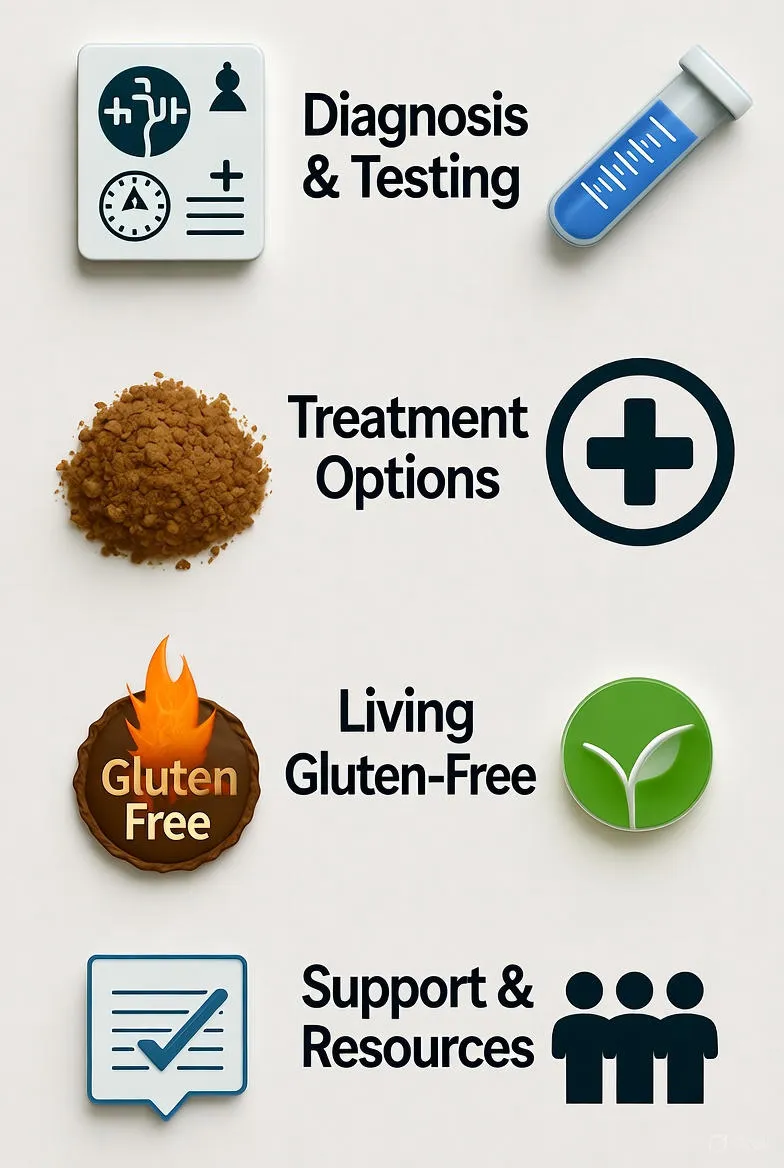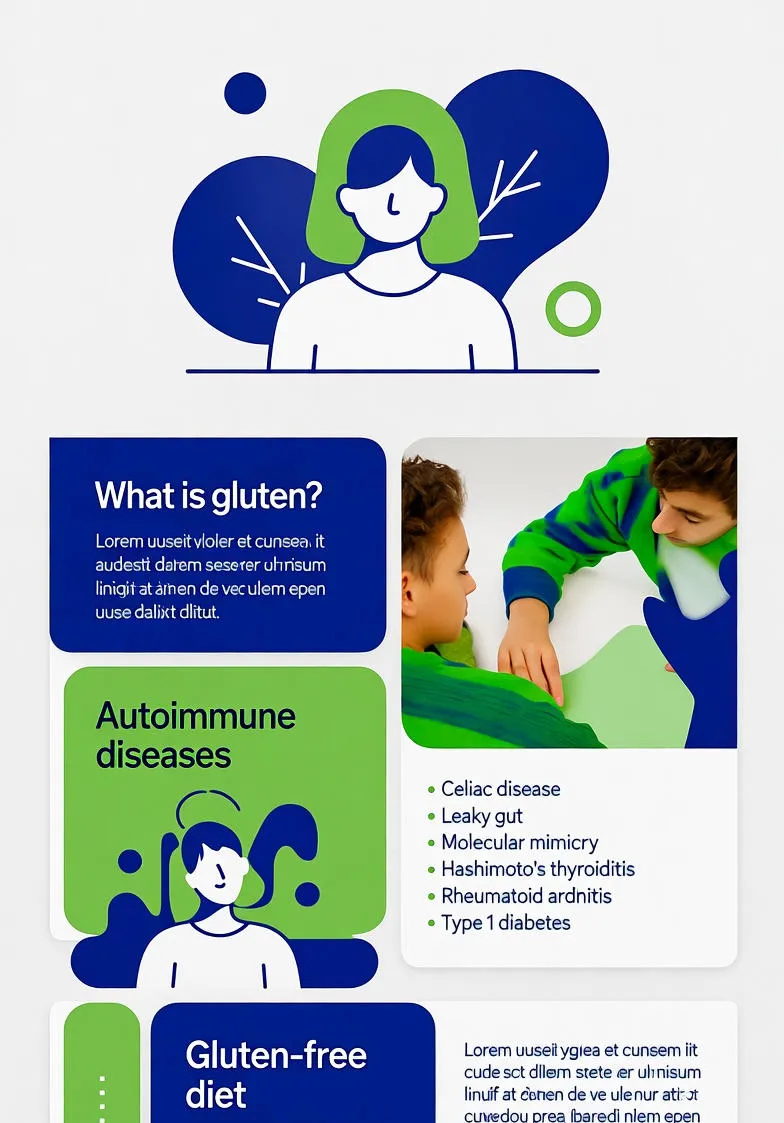The Surprising Link Between Gluten and Joint Pain: What You Need to Know
Explore how gluten consumption can trigger joint pain through inflammation, especially in those with celiac disease or gluten sensitivity. Discover symptoms, evidence, and tips for relief with a gluten-free diet.

Introduction
Joint pain is a common complaint that affects millions of people worldwide, often disrupting daily activities and diminishing quality of life. While factors like age, injury, and genetics play significant roles, emerging research points to an unexpected culprit: gluten. This protein found in wheat, barley, and rye has been linked to inflammatory responses that can exacerbate or even trigger joint discomfort, particularly in individuals with certain sensitivities. In this comprehensive guide, we'll delve into the science behind gluten's impact on joints, explore the evidence, and provide practical advice for those seeking relief.
Understanding this connection is crucial, especially for those diagnosed with autoimmune conditions or experiencing unexplained aches. By examining the mechanisms, symptoms, and dietary strategies, you can make informed decisions to potentially ease your pain and improve mobility.
What is Gluten and How Does It Affect the Body?
Gluten is a composite of storage proteins called gliadin and glutenin, primarily present in grains like wheat, barley, and rye. It's what gives dough its elasticity, making it essential for baking bread and pasta. For most people, gluten passes through the digestive system without issue, serving as a source of nutrition.
However, for a subset of the population, gluten acts as a trigger for an immune response. In celiac disease, an autoimmune disorder affecting about 1% of the global population, gluten prompts the immune system to attack the small intestine's lining. This damage impairs nutrient absorption, leading to deficiencies that weaken bones and muscles over time. Beyond celiac, non-celiac gluten sensitivity (NCGS) affects an estimated 6-13% of people, causing similar inflammatory effects without intestinal damage.
The body's reaction to gluten often involves the release of inflammatory cytokines—signaling molecules that promote swelling and pain. When these cytokines circulate systemically, they can infiltrate joint tissues, mimicking or worsening conditions like rheumatoid arthritis (RA) or osteoarthritis.
The Mechanism: How Gluten Fuels Joint Inflammation
At the core of gluten's impact on joints is chronic inflammation. When gluten proteins are ingested by sensitive individuals, they may not be fully broken down in the gut. Partially digested fragments, known as peptides, can cross the intestinal barrier—a phenomenon called 'leaky gut'—and enter the bloodstream.
Once in circulation, these peptides provoke an immune assault. In celiac patients, this manifests as the production of anti-tissue transglutaminase antibodies, which not only target the gut but also contribute to widespread inflammation. For joints specifically, this process can lead to synovitis, where the synovial membrane lining the joints becomes inflamed, causing stiffness, swelling, and pain.
Research suggests that gluten sensitivity may also disrupt the gut microbiome, the community of bacteria influencing immune function. An imbalanced microbiome amplifies pro-inflammatory signals, further aggravating joint tissues. Additionally, nutrient malabsorption from gluten-induced damage deprives joints of essential vitamins like D and K, which are vital for cartilage health and bone density.
It's worth noting that not all joint pain stems from gluten; however, for those with overlapping conditions like RA or psoriatic arthritis, the overlap is significant. Studies indicate that up to 20-30% of celiac patients experience arthralgia (joint pain) as a primary symptom, often preceding gastrointestinal issues.
Scientific Evidence Linking Gluten to Joint Pain
While anecdotal reports abound, scientific studies provide compelling evidence for gluten's role in joint pain. A 2021 study published in Reumatismo examined patients with rheumatoid arthritis resistant to conventional treatments. Implementing a gluten-free diet led to notable improvements in joint swelling, tenderness, and morning stiffness, even in non-celiac participants. The researchers concluded that gluten elimination could serve as an adjunct therapy.
Another investigation from the International Journal of Medical Sciences explored the causal relationship between gluten-free diets and autoimmune thyroiditis, extending findings to joint-related autoimmunity. It reported reduced peripheral blood leukocyte counts—a marker of inflammation—after just weeks on a gluten-free regimen.
In a cohort study involving celiac patients, published in BMC Gastroenterology, symptoms like fatigue and abdominal pain improved post-diagnosis and diet change, with joint pain showing partial relief in 70% of cases. However, the study emphasized that complete resolution often requires strict adherence.
Critics, including a 2025 Scientific American review, caution against overhyping gluten-free diets for the general population, noting limited benefits in non-sensitive individuals. Yet, for those with confirmed sensitivities, the anti-inflammatory effects are undeniable, with meta-analyses showing a 25-40% reduction in inflammatory markers like C-reactive protein.
Emerging research also ties gluten to spondyloarthritis, a group of inflammatory arthritides affecting the spine and joints. A hypothesis in Medical Hypotheses proposes that NCGS contributes to chronic low-back pain via gluten-triggered immune dysregulation.
Symptoms of Gluten-Related Joint Pain and Who is at Risk
Gluten-induced joint pain often presents as symmetric aches in the knees, wrists, fingers, or hips, accompanied by swelling and reduced range of motion. Unlike injury-related pain, it may fluctuate with diet, worsening after consuming wheat-based foods and easing during fasting periods.
Associated symptoms include gastrointestinal distress (bloating, diarrhea), fatigue, headaches, and skin rashes like dermatitis herpetiformis—itchy blisters signaling celiac disease. In severe cases, it can lead to osteoporosis, where weakened bones increase fracture risk and exacerbate joint stress.
- Common Joint Symptoms: Stiffness upon waking, pain during weather changes, and tenderness to touch.
- Systemic Signs: Unexplained weight loss, anemia, or mood disturbances.
At-risk groups include those with family histories of celiac disease, autoimmune disorders (e.g., type 1 diabetes, lupus), or inflammatory bowel disease. Women are diagnosed four times more often than men, and prevalence rises in northern European descent populations. Alarmingly, joint pain can be the sole presenting symptom in up to 10% of celiac cases, delaying diagnosis by years.
Diagnosis: Uncovering the Gluten Connection
Diagnosing gluten-related joint pain starts with ruling out other causes via imaging (X-rays, MRIs) and blood tests for rheumatoid factor or anti-CCP antibodies. If arthritis is suspected but inconclusive, gluten screening follows.
For celiac disease, serologic tests measure IgA anti-tissue transglutaminase (tTG) antibodies, with sensitivity exceeding 90%. Positive results warrant an endoscopy and biopsy to confirm villous atrophy. Importantly, patients must consume gluten (at least 10g daily) for 6-8 weeks pre-testing to avoid false negatives.
NCGS diagnosis is trickier, relying on exclusion: negative celiac and wheat allergy tests, followed by a symptom-tracking elimination diet. A 4-6 week gluten-free trial, then reintroduction, helps confirm sensitivity if pain recurs.
Consulting a rheumatologist and gastroenterologist ensures a holistic approach, potentially including genetic testing for HLA-DQ2/DQ8 markers, present in 95% of celiac patients.
Embracing a Gluten-Free Diet: Strategies for Joint Relief
A gluten-free diet is the cornerstone of management, often yielding relief within 2-4 weeks. Start by purging your pantry of obvious sources: bread, pasta, cereals, and beer. Hidden gluten lurks in sauces, processed meats, and medications, so scrutinize labels for 'wheat' or 'barley' derivatives.
- Focus on Whole Foods: Incorporate quinoa, rice, oats (certified gluten-free), fruits, vegetables, lean proteins, and dairy (if tolerated).
- Nutrient Boost: Supplement vitamin D, calcium, and B vitamins to counter malabsorption risks.
- Meal Ideas: Breakfast: Smoothie with berries and almond milk. Lunch: Grilled chicken salad with olive oil dressing. Dinner: Baked salmon with sweet potatoes and greens.
Pair dietary changes with anti-inflammatory habits: omega-3-rich fish, turmeric, and ginger teas. Low-impact exercises like swimming or yoga maintain joint flexibility without strain.
Challenges and Long-Term Considerations
Transitioning to gluten-free living isn't without hurdles. Processed alternatives can be pricey and less nutritious, risking weight gain from higher carbs or fats. Social dining poses cross-contamination risks, so communicate needs clearly.
Monitor progress with a food diary, noting pain levels on a 1-10 scale. If symptoms persist, investigate co-sensitivities like FODMAPs or dairy. Long-term, bone density scans track improvements, and annual check-ups ensure sustained health.
While promising, gluten elimination isn't a panacea. For refractory cases, medications like NSAIDs or biologics may complement diet.
Conclusion
The link between gluten and joint pain underscores the profound interplay between diet and inflammation. For susceptible individuals, ditching gluten can unlock significant relief, restoring vitality and ease of movement. If joint woes plague you, consider consulting a healthcare provider for tailored testing— the path to pain-free days may begin with a simple dietary shift. Remember, knowledge empowers; armed with this insight, you're one step closer to optimal joint health.


